Founder's Statement
AMD&ART: A Challenge to Creativity in Reclamation
In all our materials, you will consistently see a small statement following the AMD&ART name, "Artfully Transforming Environmental Liabilities Into Community Assets." We take that goal seriously. We think art-full approaches open new perspectives and new constituencies to environmental projects and by "art" we mean all the academic Arts, not just traditional visual artists, but writers, designers, sculptors, historians, anthropologists and many other unfortunately compartmentalized disciplines. We seek to "trans-form" these environmental projects by crossing disciplines to form better, more holistic, perhaps more humane approaches. Finally, we seek to find the ways to make these multidisciplinary collaborations produce forms, environmental projects, that people will want, projects that can delight the senses, engage the mind, honor the past, nourish nature and the soul simultaneously, and create viable models for other projects to follow.
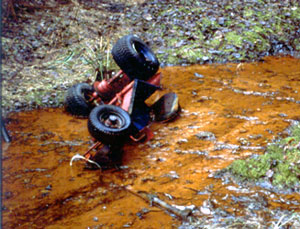
We started in the Appalachian Coal Country, actually hundreds of counties spread across a dozen states east of the Mississippi, one of America's forgotten places and perhaps its largest forgotten ecosystem. Most often described and photographed as a land of overwhelming environmental and human desolation, this region stretches from northeastern Pennsylvania west to include our first site in Vintondale, then further west and far to the south, down the Appalachian Mountains, into central Alabama. Across this vast region you will find a remarkably similar history and culture, places where low levels of hope match levels of income and environmental devastation can overwhelm human aspirations for a better life.
Dead orange-coated streams and vast black piles of waste rock called "bony" or "culm banks" or "gob piles" have come to symbolize this place. The broken remnants of company towns, "patch towns," or "coal camps" scattered by the scores throughout these mountains, contain the peoples still caught in the free-fall of mechanization, industrial decline, globalization and an old company-town mindset that can seem passive in its acceptance. Theses are places where the number of families with children living in poverty too often exceeds fifty percent and where the surrounding environment only enforces a sense of overwhelming abandonment.
For AMD&ART, or at least for me, an historian/artist, when I was just starting AMD&ART, this vast eastern mountain ecosystem seemed to be a place in which this nation could best confront — and overcome — its environmental and economic past, adding thousands of acres of reclaimed, healthy lands and waters — and peoples — to our national treasure — and where we could establish that the Arts and the Humanities are critical to that recovery process. Within the conflicted history and ravaged landscapes of this region are the seeds of hope, change, sustainability and even healing. Here we can rescue a vast ecosystem that spreads across the eastern core of our nation, region-by-region, watershed-by-watershed, and even person by person. Here we can establish critical, civic roles for artist and designers, for scientists and historians — for all of us — determined to engage in the 21st century civic healing that must follow the unmitigated greed (and environmental neglect) of American culture for much of the 19th and 20th centuries. If "Art is Life", it is life that is needed most in these despoiled hills: civic life, and a livelier habitat for us all.
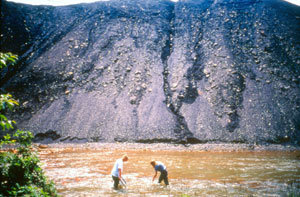
While problems within this region are many, Acid Mine Drainage is acknowledged by the EPA as the largest water quality problem, afflicting thousands of miles of streams and their communities. I would suggest it is also the most emblematic of coal country environmental issues. Scientifically, Acid Mine Drainage, AMD, is the ubiquitous and unstable acid-and-metals-laden water that seeps or gushes from abandoned coal mines, chocking streambeds with orange sediment that kills the bottom of the food chain, leaving streams dead. In a larger human perspective, AMD is the orange, silent signature of dying communities, lost biodiversity, lost opportunity, the emblematic color of slow death. The surface expression of vast underground industrial activity (coal mining) now abandoned, one writer aptly described AMD as the "gangrenous puss of deep earth wounds."
Some watersheds may have one AMD discharge for every square mile in their watershed, a daunting prospect. But within the last ten years, the life span of AMD&ART as a project, sustainable, environmentally rational approaches to treating AMD have proven successful. Termed "passive treatment" these systems learned from nature, employing native plants and native limestone to neutralize the acid, drop out the metals, and release both clean water and new hope. During these same years, volunteer watershed groups have been organizing to fight AMD and other problems in their watershed, discharge by discharge, stream by stream. With help from a few government programs and private sector firms, they are quietly destabilizing the negative expectations of coal country culture, creating patterns of community success and innovation, and organizing constituents into effective, hard-working advocates for their watersheds. We are proud to be a part of this watershed movement.
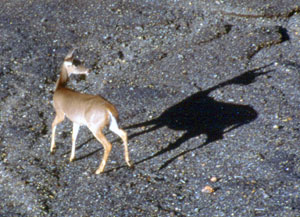
But when I started AMD&ART, virtually none of this existed, and what did exist I knew little about. No one was talking at national symposia on creativity about AMD and Coal Country, there were no artists, or designers, or historians that I knew of engaged in helping to design passive treatment systems, indeed passive treatment systems were just barely under development. When I started, I called my idea "the art thing" because I did not want to define it further. We needed to find a way to engage many people in the largest environmental problem in the region, one so long-lived and ubiquitous that natives in their 40s recalled thinking in their youth of their local streams as filled with orange juice and never once questioning the possibility of something better than those orange juice streams of their childhood. Years earlier, I learned a lot about the work of others in public art, thanks to a couple NEA Individual fellowships and a Hirsch Farm Residency, so I went looking for a team that could work with me on this quest. It would be avowedly inter- and multi-disciplinary; it would start with real understanding based in history, engage serious sculptors and designers in the entire process, make sure we had solid science at every stage, work so closely with the community that their aspirations were fully translated into the form and substance of the project and keep that process open to the creation of solutions that not only fixed the immediate environmental problem, but opened opportunity for broader engagement by all concerned. Equally important, it simply could it fail: that's happened too often in this region already.
And it is working. Today, AMD&ART is a nationally recognized model for reclamation, working with many partners to effectively and sustainably treat AMD and coal communities. We challenge the belief that treatment systems should be hidden away, just because we as a society are ashamed of the mess we have created. Rather, AMD&ART maintains that reclamation should be a celebration, an overt and visible effort by our own generation, a chance to artfully redeem a legacy now identified with mountains of waste coal, rust-coated streams, and economic depression but equally responsible for the nation building, community development and personal achievement that made this country. We've proven that treatment systems can also become gardens, native plant arboretums and places of learning; we can create wetlands of wondrous living complexity and transform industrial site remnants into historical reminders, "ghosts," that invite reflection. Once-passive community members have become advocates for their new community place — a reclamation project that addresses the water and the people, bringing fresh perspectives and a stronger community.
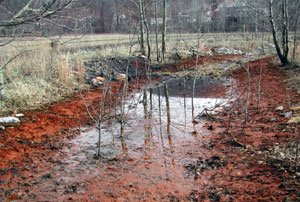
I think AMD&ART is successful because it is art and people, because we all pledge to never compromise but always accommodate, because our structure stands on three legs for greatest stability — our design team, our AmeriCorps and VISTA staff, and a deeply engaged community. We are an integrative, multidisciplinary approach that provides a new arena large enough to include the interests and concerns of an entire community while together we create a delightful and interesting public place that fixes a real problem. We bring individuals, organizations and funding agencies with diverse interests to work together as partners, bringing new energy and comprehensive solutions to AMD remediation in Appalachia. And we do it on a very small operating budget: our only staff is AmeriCorps and VISTA, our director a volunteer, and our volunteers numerous. Our commitment is to keep it simple, simple enough for others to follow, for others to find equal success.
This multi-disciplinary collaboration built a 35-acre site in Vintondale by gathering over $950,000 in funds — and easily as much in-kind — drawn from many sources, only one of them a traditional source of AMD remediation dollars. Partners as unlikely as the U.S. Environmental Protection Agency's Sustainable Development Program, the Vira I. Heinz Endowment, the Pennsylvania Department of Transportation (Penn DOT), the Rockefeller Foundation and the Department of the Interior Office of Surface Mining are working together to fund the creation of this place and they are joined by many more small funders who bring depth and diversity to our efforts. To assure long-term sustainability, the sale of our wetlands created in partnership with Penn DOT and designed with assistance from the Wildlife Habitat Council allowed AMD&ART to establish a trust fund tin the local Community Foundation of the Allegheny's, providing funds for maintenance of the treatment system and wetlands in perpetuity — while also creating some of the richest wetland habitat in the region.

But there is a deeper mission here as well, one I think all of us as citizens must understand. Vintondale and hundreds of towns just like it are not localities in which a new and engaging public space artfully executed will be a pleasant amenity — these are peoples and places caught in the backwash of economic collapse and social distress. Escape from the orange-coated AMD streams and blighted environments of these places is no amenity, it is essential for survival, for creating the sense of hope and pride that is a part of our character as Americans. Any "art" must work on many, many levels — and again, failure is just not allowed.
Vintondale, Pennsylvania, our project site, is a small coal patch town in Cambria County, some 15 miles northeast of Johnstown, nestled deep in the Blacklick Creek Valley. Created by the Vinton Coal Company in the early 20th century, Vintondale is a community whose history was defined by underground mining and vast surface works, yet the tangible reminders of this once-proud past are largely gone. In the 1950's, the last deep mine in Vintondale closed forever. As the procession of miners across the footbridge to the coal complex ceased, so did the sounds of the tipple, the smoke from the railroad, and the nighttime glow of the coke ovens. The buildings and structures were taken down, bricks and cut stone were taken to build walls and repair houses in the community. By the 1980s, the site was the town dump.
Today, Blacklick Creek is blanketed with orange sediment from acid mine drainage and the main street is lined with dilapidated buildings. The population of 528 is a mere quarter of what it was at the height of the mining industry, and 18% of those residents now live in poverty. The per capita income is $11,689: that means for every one dollar earned by the average Pennsylvanian, the average Vintondale resent earns 48 cents. Not surprisingly, only 4% of the population over 25 has a college degree. These are citizens who rarely, if ever, have the opportunity to participate and learn from any kind of cultural or arts-related activities within their own town. There is little sense of being special in Vintondale, no particular distinction to boast of, only constant decline for half a century-typical for much of Coal Country, too typical.
The Vintondale site is situated on thirty-five acres of mine-scarred land that once hosted the heart of this small mining town — the Vinton Colliery with its half-dozen major buildings and the Pennsylvania Railroad line that connected Vintondale with the outside world. The northern edge of the site is the old railroad right-of-way, today known as the Ghost Town Tail Trail, which attracts approximately 75,000 users annually, a major factor in selecting this site. The South Branch of Blacklick Creek, a river severely impacted by AMD, curves around the eastern and southern boundaries of the park and separates it from the town.
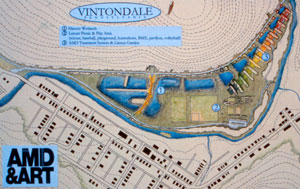
Like most of coal country, townspeople are still deeply connected to this central place and community involvement has been an integral component of the AMD&ART process from the beginning. More than 80 residents — 10+% of the population — turned out for two public design meetings to write down their ideas on site maps and to talk with AMD&ART team members and each other about their town and the best AMD&ART solution. The resulting design proposal incorporates ideas from everyone that contributed, attracting wide community and agency support and giving our final design the deep imprint of community perspective.
This community support — and a lot of work by AMD&ART AmeriCorps and VISTAs — is what made the AMD&ART Park a reality. Using an interdisciplinary team with me literally choreographing the entire process to assure that we incorporated ideas and suggestions from the community and many other sources, this immense swath of desolate land has become a place for recreation, historical reflection, and AMD remediation. At the eastern end of the park, a sequence of large pools shaped to fit the topography and reduce excavation costs mark the beginning of the treatment system. The AMD discharge flows through this series of settling ponds and a Vertical Flow Pond until it flows into the wetlands, cleansed of its metallic pollutants and neutralized to a healthy pH. Planted bands of native trees, their fall colors reflecting the increasing health of the water, transition form deep red to orange, then yellow, then to silver-green alongside the system in a Litmus Garden, a native tree arboretum that may also create the opportunity for a fall festival celebrating the Litmus Garden's peak color and Vintondale's recovery. Where black bony, or waste coal, once barely supported scrubby grasses and stunted trees, a new 7-acre wetland environment is attracting a variety of birds and wildlife. That environment, our History Wetlands, also reveals the foundation remains of the Vinton Colliery structures. Planted in a monoculture of Red Maples, these "structures" will again rise to assume the approximate scale of these massive buildings. At the center of the AMD&ART Park, we are working with the community to build an active recreation area, a place filled with baseball, soccer, horseshoes, volleyball, picnic tables, grassy places for little kids and their moms and more.
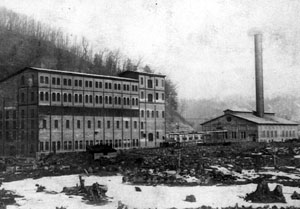
At the site of the Mine No. 6 portal we are reconstructing the heavy timber frame of the mine opening and filling the opening with a black Granite slab etched with the life-size images of miners taken from 1930's film footage from Mine No. 6. Just across the Ghost Town trail from the portal, a 15 by 25-foot platform at grade will become a mosaic map of the entire site, opening better understanding of the mine and its community. At the point where the now-clean water returns to the river, a national student competition will create a marker for this victory. Finally, looming over the eastern edge of the site is a massive pile of bony that we hope will one day provide an excellent vantage point to overlook the park and think a bit about the scale of this human endeavor, the determination and simple grit of the people that started all this, and the commitment of their kids who finished it, closing a circle of critical significance.
Visitors to the park can walk on interpretive trails that draw together historical information, the science behind passive AMD treatment and the newly healed ecosystem that now thrives in the wake of remediation. I hope residents and visitors alike will gain new perspective on the resilience of nature and the ability of humans to work with the environment in a healing process that creates a new community center. The physical presence of the energized place will symbolize the success of community residents in healing these waters, not only by finishing a job left unfinished by past generations, but also by creating a new asset for their own families and future. AMD&ART is demonstrating that AMD treatment sites, creatively designed with the community, have the potential to re-instill a sense of place and pride, allowing community members to forge new connections to the local environment and history.
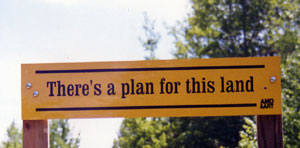
I think there are lessons in AMD&ART successes in Vintondale that can be applied much more broadly. Most importantly, restoring streams contaminated by AMD, or reclaiming any other environmentally devastated area in which people have a stake, requires more than technical fix — sustainable reclamation is not just a science project. A lasting solution to the complex problems of environmental reclamation must be cultural and environmental. A scientific solution may clean the eater, but a multidisciplinary solution has the power to both clean the water and engage community in a healing process. AMD&ART has demonstrated there is great potential to reclaim and restore this part of Coal Country, to bring the region greater environmental sustainability and economic prosperity. And I think we are establishing a new role for artists and humanists as well, not as solitary visionaries, but as participants; not as some ultimately mystical or magical process, but an important, critical perspective; not as arbitrator, but as co-worker, one among many disciplines equally necessary (but none sufficient) to the recovery and revitalization of this region and its peoples.
I think to heal our streams and our communities, we must engage the public in such a way that there will be widespread demand for environmental improvement and the better quality of life that a healthy place can provide. Our environmental projects must be good enough to create a demand for more projects by voters that want one in their own backyard. AMD&ART proves that attention will come to the problem of AMD through the construction of treatment systems or reclamation projects that are integrated into artful, educational, engaging, even delightful, public places. To re-conceptualize AMD treatment in this way is to create a paradigm shift; we really do transform environmental liabilities into community assets. Happily, today, there are two AMD&ART - like projects underway, one in Murray City, Ohio and the second on the campus of the University of Virginia at Wise. Perhaps more important, reclamation and watershed restoration projects as big as the Upper Clark Fork (part of the largest superfund site in the U.S.) and as small as Crowley Creek on the Oregon coast are using AMD&ART as a model that beings the arts and humanities — and real interdisciplinary collaboration — into the environmental planning process.
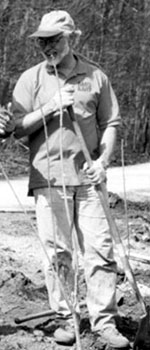
Slowly and tenaciously, AMD&ART is working, like many other groups, to create and environmentally rational and developmentally sustainable future in a region where "man" created the mess, and men and women are now working hard to fix it. In the Eastern coal country, in the Western hard rock mining country and on mine-scarred lands across America, I think AMD&ART suggests some critical and deeply meaningful pathways to more useful reclamation — and to the civic engagement that is the hallmark of a healthy and creative society. AMD&ART has developed a way to destabilize the typical negative expectations of environmentally degraded regions with large-scale artful new public places that address both the problem and its social consequences. We've proven that bringing the perspectives of history to mix with the discipline of science, the healing accessibility and delight of innovative design, and the energy of community engagement, creates a productive pathway for action. As a nation, we cannot afford to allow this vast Appalachian ecosystem — or any other significant reclamation project community — to be less than full participants in the environmental and economic benefits of the new century. And I believe as citizens — artist, historian, scientist, or whatever — we cannot afford to miss the opportunity to engage.
T Allan Comp, Ph.D.
Founder: AMD&ART
October 2003
Much of the thinking I've done about AMD&ART I did at the Headlands Center for the Arts while on a Bridge Residency in 2000 that gave me unrestricted and uninterrupted time, a wonderful gift. This essay started while a Returning Resident at the Headlands in 2003.
AMD&ART: The Project, 1994 – 2005
contact T Allan Comp • Phone: 202-486-5297• Fax: 202-483-7339 • tacomp@verizon.net
All Rights Reserved · © AMD&ART 2003 – 2016
All Rights Reserved • AMD&ART 2003 – 2016 • Email: [email protected]
